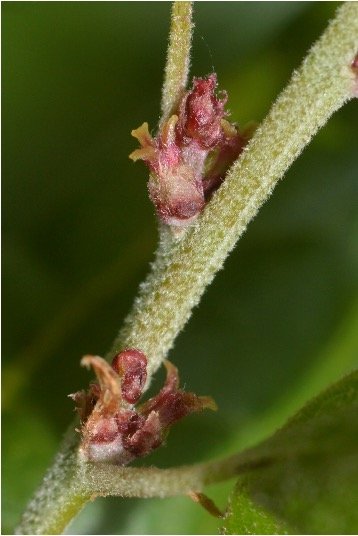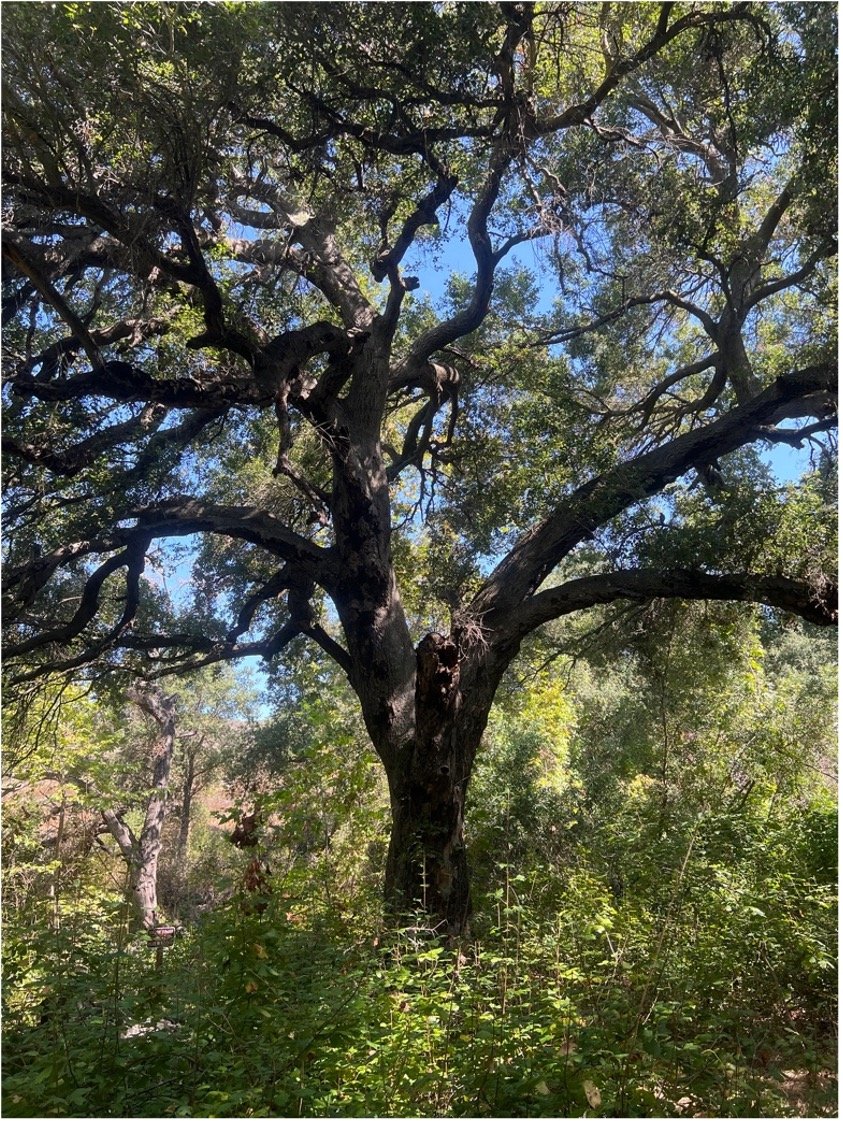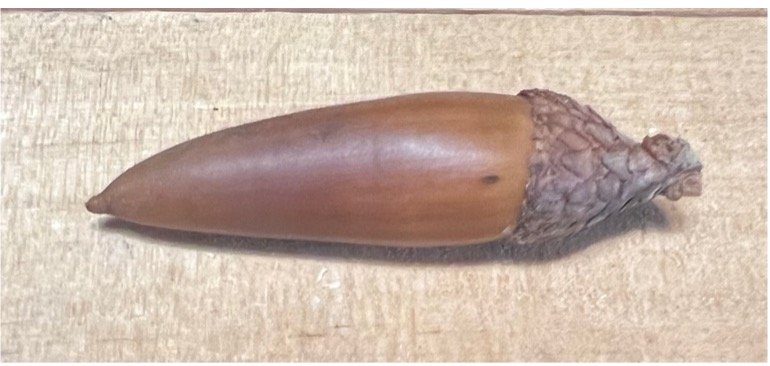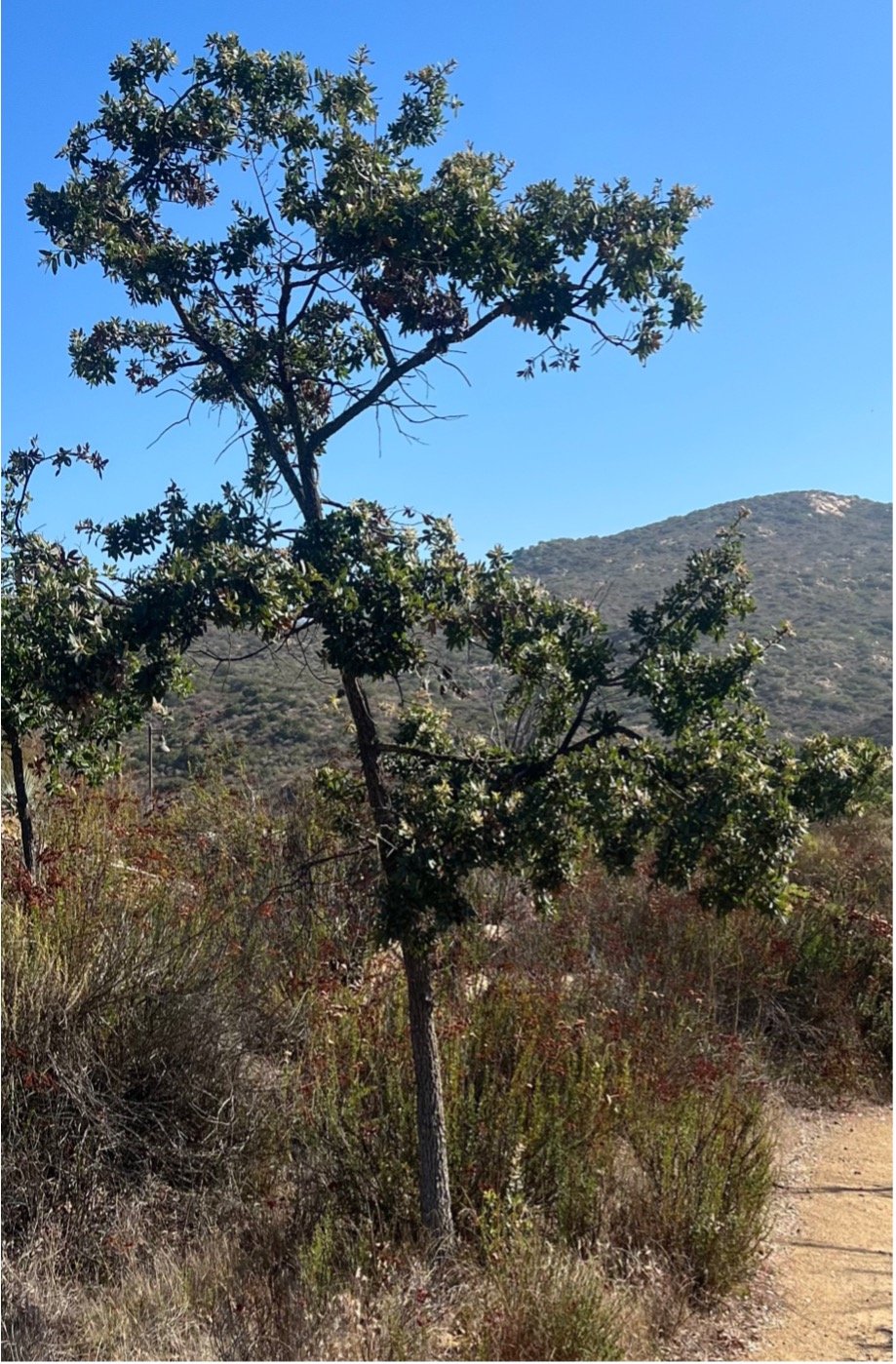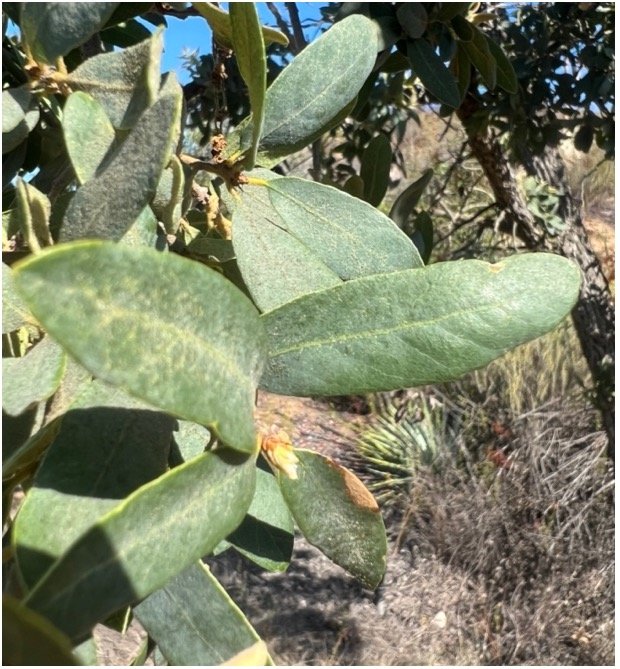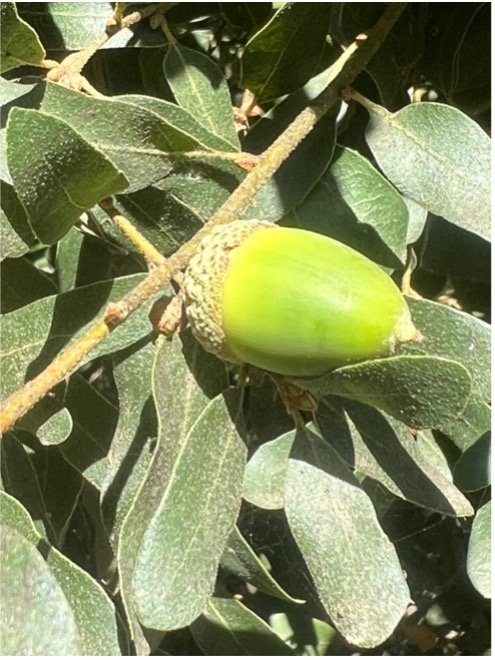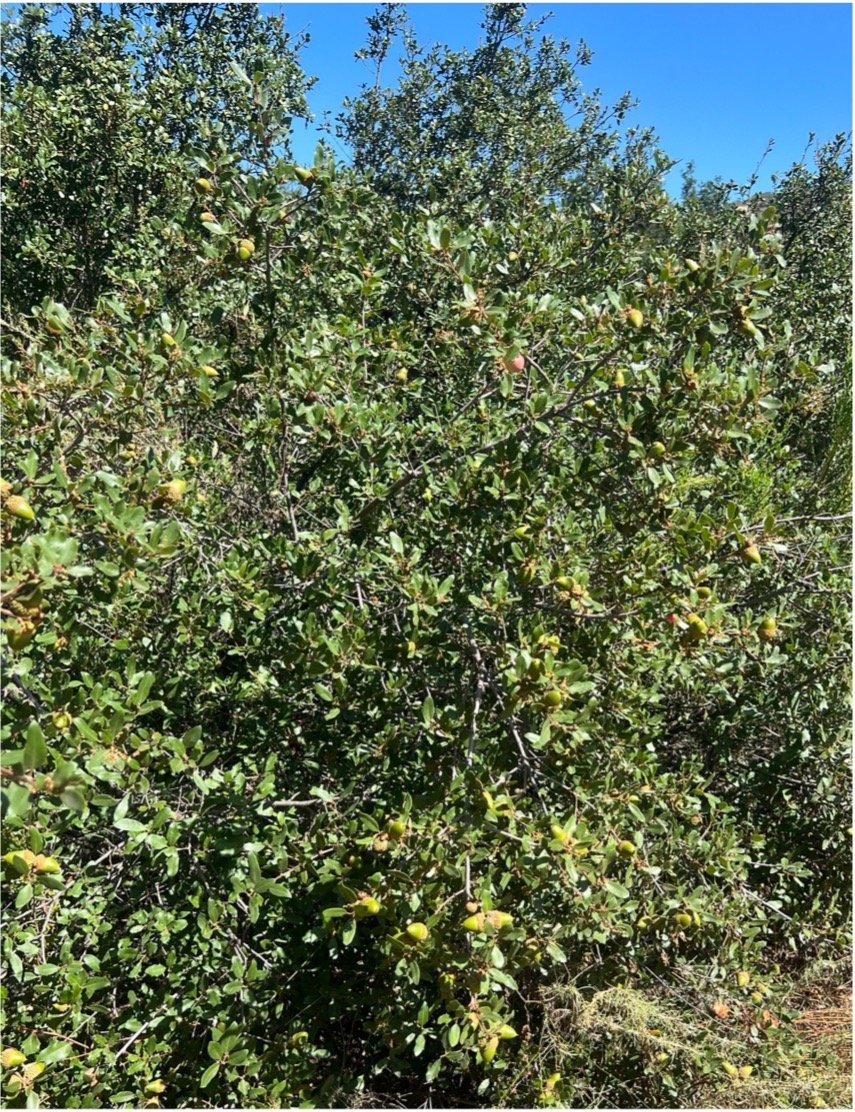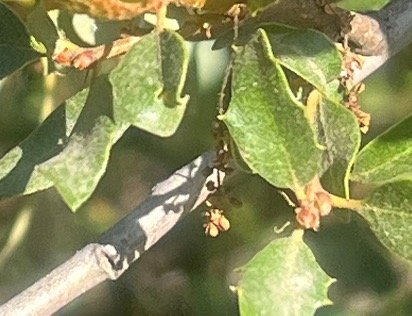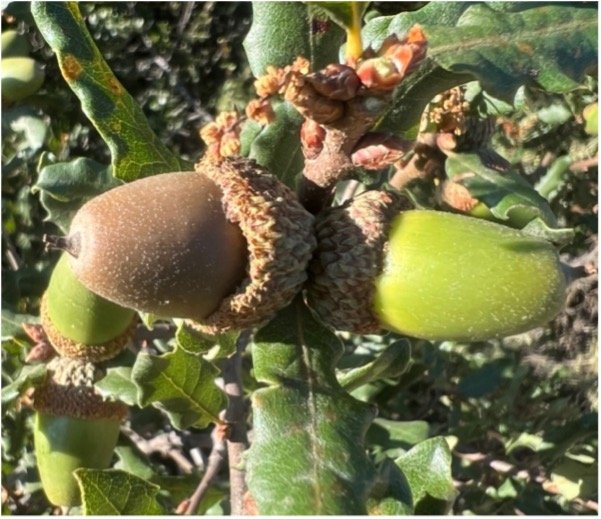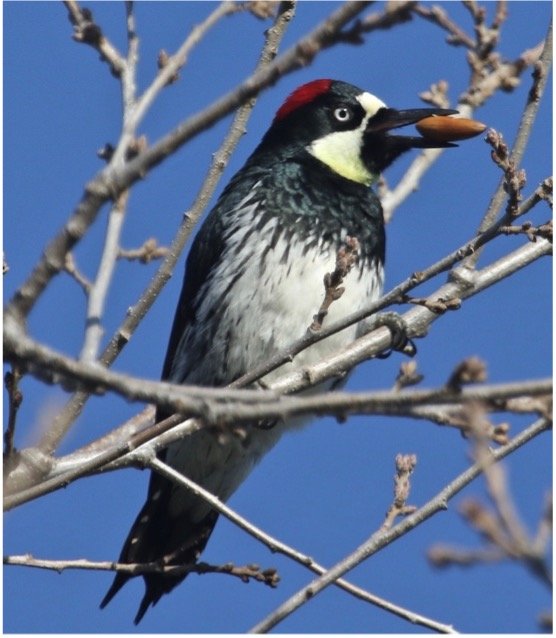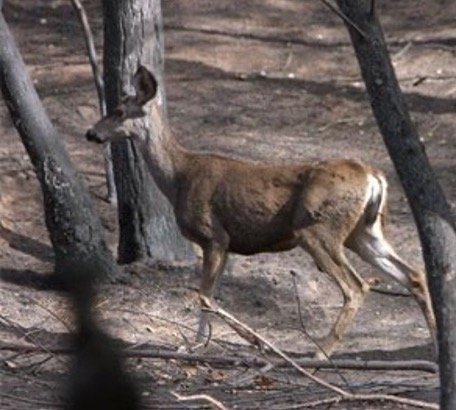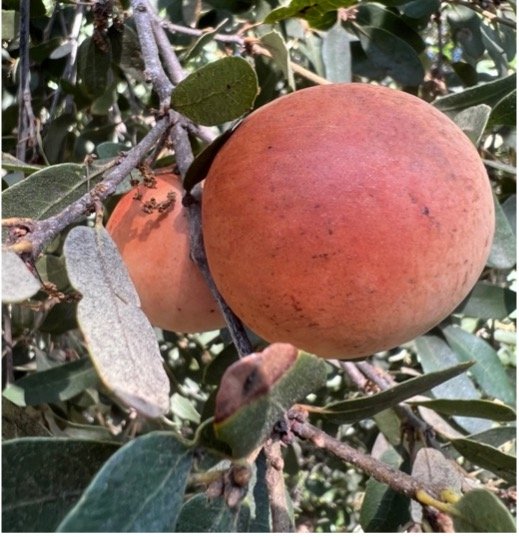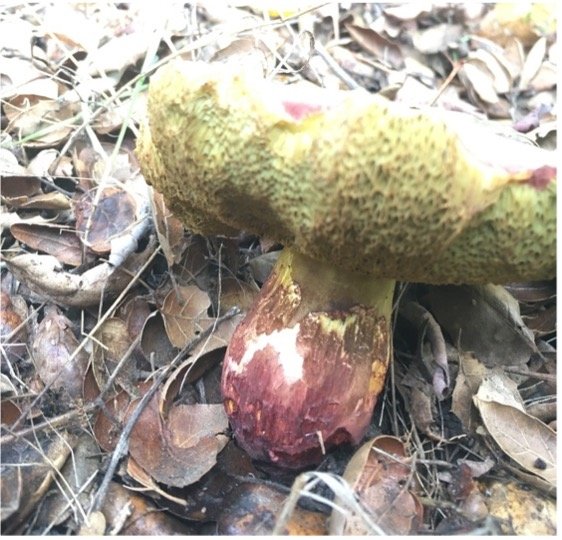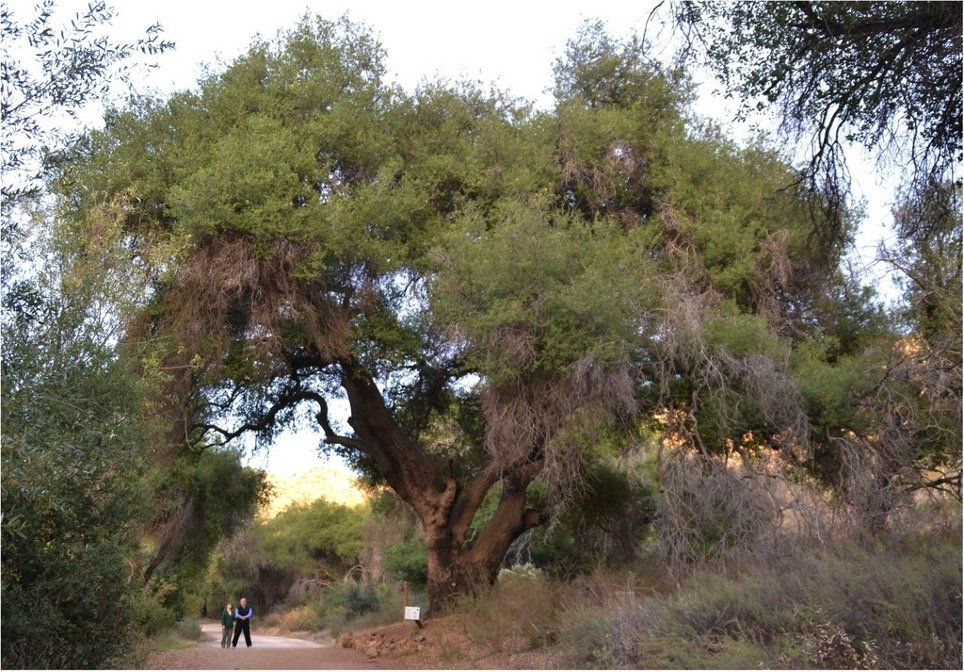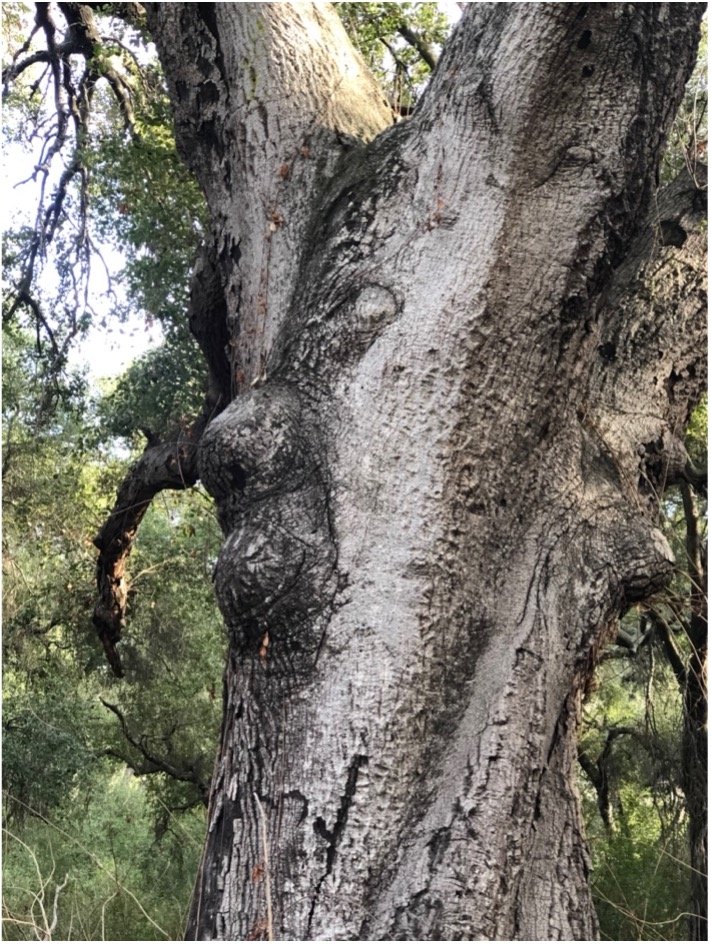Nothing symbolizes the City of Poway more than an oak tree. At one time there were vast groves of them throughout this area.Blue Sky with its north facing slopes, canyon and available ground water, is ideal habitat and has one of the last great stands in Poway.
What makes an oak tree an oak tree?
Acorns! The tree’s fruit containing the seeds.
Since oaks are pollinated by the wind, they do not need to have big, colorful, showy flowers to attract animal pollinators.
Male flowers which produce pollen are dull yellow and hang down from catkins.
The very small, brown, female flowers which, when pollinated, become the acorns with seeds inside.
the 3 species of oaks in Blue Sky
Coast Live Oak (Quercus agrifolia)
This broad spreading species is the largest in size, the longest living, and the most abundant of our oaks. Some have reached 75 ft. in height and 130 ft. in spread, and have lived as long as 375 to 400 years. The name “Live Oak” refers to the fact that they don’t drop their leaves in the Fall like most northern and mountain oaks; they stay “evergreen” all year.
Engelmann Oak (Quercus engelmannii)
This species is rare in Blue Sky. Since it can handle slightly drier habitats, they are often found farther out from the streambed than the Coast Live Oaks. When conditions are very dry, they will drop some of their leaves to conserve water.
California Scrub Oak (Quercus berberidifolia)
This plant is a “true oak” even though it is not a tree. Its body form is that of a shrub, with many small trunks coming out of the ground. It is one of the dominant chaparral shrubs in San Diego county. Forming impenetrable thickets, scrub oaks requires less water so they can survive in a drier habitat. There are many specimens along the main trail in Blue Sky. It sometimes hybridizes with Engelmann oaks. A few of these hybrid oaks can be found in Blue Sky.
Oaks are a Keystone Species
Many other organisms depend on oaks at Blue Sky.
Acorn Woodpecker: Best known for its habit of hoarding acorns woodpeckers drill small holes in dead sycamores or pines, then store harvested acorns in the holes to be eaten during winter.
Gray Squirrel: Squirrels needs to eat the equivalent of their own weight weekly. They will work relentlessly to make sure they have nuts in lean times and can collect and bury up to 50 nuts an hour during high nut season.
Mule Deer: Acorns from oaks are an important food source for deer in late summer, fall and early winter, and comprise about 35% of their diet from September to December.
Oak Gall Wasps: Oak galls are abnormal plant growths found on foliage and twigs that are produced by this small insect. Inside the galls are the eggs and larvae of the insect. The larvae feed, pupate, and emerge from the gall as adult wasps.
Oak-Loving Bolete: These mushrooms shares nutrients with the roots of oaks, forming a mutually beneficial relationship with the tree.
famous oak trees in blue sky
Text and most pictures courtesy of Al Torretto.



